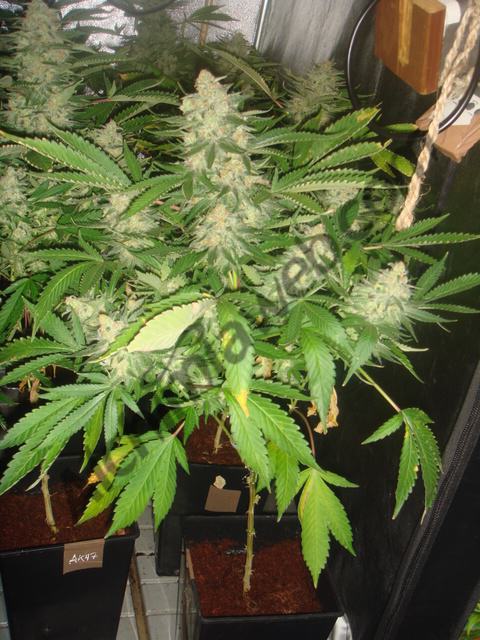How to grow cannabis plants in clay pebbles
List of contents
- Growing with clay pebbles
- Which growing system to use with clay pebbles?
- Cleaning and stabilising clay pebbles before use
- Flood & drain cultivation systems
- Drip irrigation systems
- Fertilising plants grown in clay pebbles
- How to properly flush the roots of cannabis plants
- How to use Hydrogen Peroxide with clay pebbles
- The Ph level in hydroponic crops
Growing with clay pebbles
Expanded clay pebbles are a widely used growing medium in the world of hydroponic cultivation. It’s a lightweight, roughly spherical, red ceramic aggregate with a high iron content. Before it can be used, it must undergo several different processes during manufacture. The most important of these steps is heating at extremely high temperatures, causing the rapid expansion of the clay and trapping air in pores within the odd-shaped balls. Clay pebbles have many uses besides hydroponic growing, also being widely used in construction as lightweight aggregate and thermal insulation, etc.
The size of clay pebbles can vary from 5 mm for the smallest to 15mm for the very largest kind. It must be noted that bigger clay pebbles will retain moisture more easily and for a longer time than those of smaller size.
In this post we will focus on explaining how to properly employ clay pebbles in cannabis cultivation and avoid any potential problems using this hydroponic culture medium.
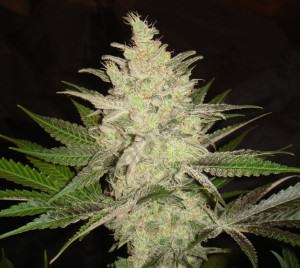
Which growing system to use with clay pebbles?
There are many different hydroponic growing systems, so, first we must make clear which type of cultivation system is suitable for use with clay pebbles. This substrate basically allows us to use one of two irrigation methods in recirculating hydroponic systems; flood & drain (ebb & flow) or drip-feed irrigation into a plant pot or tray.
Cleaning and stabilising clay pebbles before use
Expanded clay pebbles are non-sterile and can often contain residues and impurities. Theses contaminants can dissolve in the tank with the result of changing the EC and pH level. Before using, the clay balls must first be cleaned and stabilised properly.
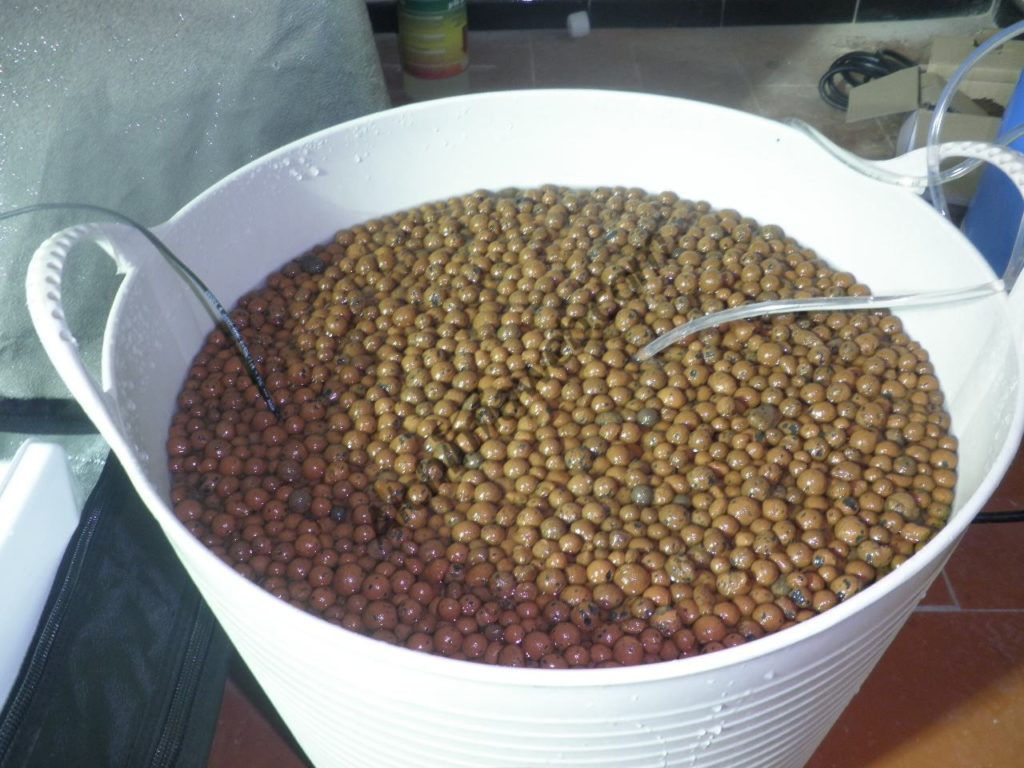
Cleaning the clay pebbles is easily done. Simply place them in a bucket, bath or any suitable watertight container, cover with water adjusted to pH 5.5 and soak for 24-48 hours, changing the water once a day to ensure a clean, pH-adjusted medium.
This simple procedure is of utmost importance; if not carried out, the resulting instability in EC and pH can drastically affect plant health and development.
Flood & drain cultivation systems
Flooding cultivation systems are composed of a large tray of about 10 cm depth, which we fill with the clay pebbles as if it were a planter. This tray has a drainage outlet connected a vertical overflow tube that works as a flooding-level control and empties the water if for some reason the pump doesn’t stop when it should. In this way we avoid nasty surprises and potential damages from overflowing irrigation water flooding the entire growing space.
The tray with the clay pebbles will also have an outflow for the evacuation of the nutrient solution, leaving the substrate moist but not waterlogged, enabling us control humidity and irrigate again when necessary.
In this growing system the method of watering differs slightly from the typical drip irrigation methods. In flood & drain systems, the total duration of the irrigation process between filling the tank and emptying it, shouldn’t last more than 20 minutes. The frequency of irrigation will vary according to the stage of development and condition of the plants. We can begin with two daily waterings and finish with five, or six at the end of the flowering stage, always taking into account the needs of the plants.
Before beginning cultivation with this system, we must previously plant the cuttings or seeds into rock-wool cubes. This ensures plants already have good root development enabling them to start growing with strength and vigour.
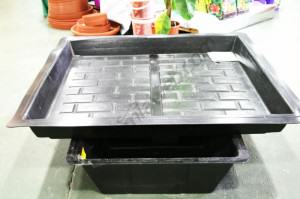
Once we have the plants well-rooted in rock-wool, we place the cubes into the expanded clay. For optimum development, we should take care to ensure all the rock-wool is fully covered by the clay pebbles, avoiding exposure to light that can affect the roots.
Remember that it will be necessary to change the nutrient solution in the tank when we begin to flower the plants. Initially we are using a nutrient designed for vegetative growth and this won’t be suitable for our blooming plants. In addition, the EC level will vary according to which stage of life the plant is in. It’s possible to carry out maintenance of the nutrient solution so that when you observe a decrease in the EC or the water level, you will have to fill up with water adding nutrients until reaching the desired EC level and thus leaving the deposit ready for the following week.
Drip irrigation systems
If we grow in clay pebbles with drip irrigation systems, we should take care with the placement of the drippers to assure an even distribution of water within each pot. It is important that all areas of the substrate are receiving the same, or at least very similar levels of moisture. In this way we can avoid any dry pockets of growing media, given that the roots only are going to develop where moisture is present.
When deciding on a watering schedule, it is also important to take into account factors such as humidity. If the grow space has high levels of humidity and insufficient ventilation, the substrate will stay wet for longer. In consequence we have to provide fewer waterings which also should be more gradual. On the contrary if we see that the humidity is lower than usually and we have a constant air ventilation with fans, the residual humidity levels will be lower than normal. In this case the irrigation should be more frequent and of a longer duration.
In hydroponic growing systems like this, where the substrate offers little in the way of protection to the roots, it may be necessary to use an additive product, for example TA Silicate from Terra Aquatica which contains silica and helps us protect the plants from possible root rot, diseases, virus, etc.
As part of the ongoing maintenance programme, drip irrigation systems will require cleaning with a salt-remover like Pro XL Pro-Clean. In this way we avoid the buildup of residual salts in the tubes and drippers which could eventually lead to blockage and cause serious problems with our grow.
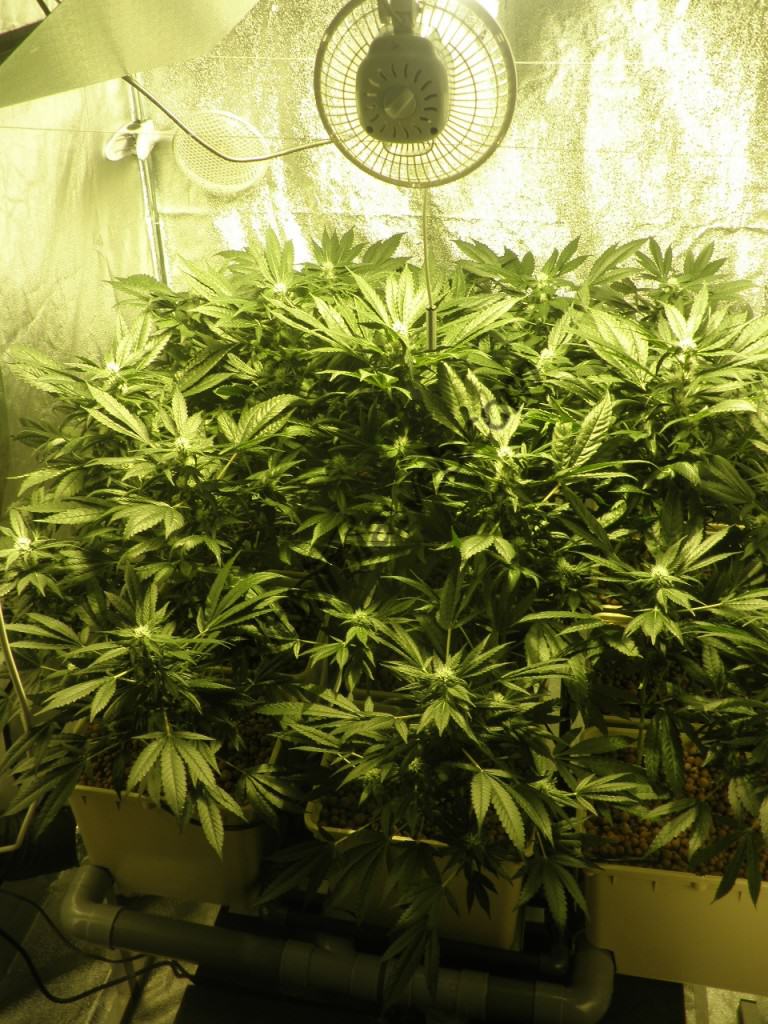
Fertilising plants grown in clay pebbles
Expanded clay is a highly oxygenated substrate in which the roots are attached-to and grow around the clay, growing in direct contact with the nutrient solution.
The EC levels in these growing systems should be lower than those normally used for growing in coco-coir. The EC level of the nutrient solution shouldn’t initially exceed 0.6 points and we will have to increase it as plants grow without exceeding 1-1.2 points during the growth period, provided we aren't seeking extra growth for mother plants or establishing SCROG growing.
Once the root system is well formed and the plants have grown larger and more resistant than in their early stages, we can start to gradually increase the EC level to avoid deficiencies.
Upon entering the second week of flowering we can use an EC of 1.3-1.4 points. We should maintain these ranges up to the 4th week of flowering, at which point the flowers begin to increase in volume.
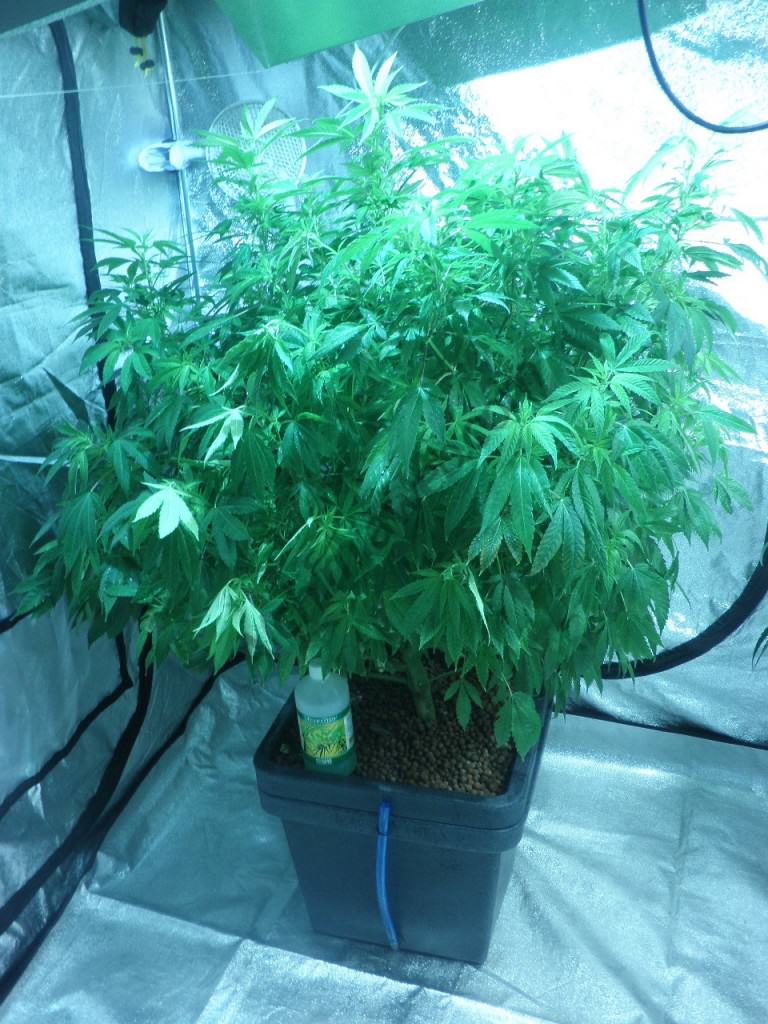
In the weeks 5-6-7 we can give higher EC levels up to 1.5-1.6 points or more. We must always take the nutritional needs of our plants into account and adjust nutrient dose according to their life stage. During these weeks we will have to increase the frequency of watering to keep pace with the plant's increased demand for nutrient solution. In this way we ensure that the plants receive the best nourishment possible to create large, tasty and resinous buds.
During the last two weeks as we near harvest, we will need to switch the nutrient solution of the tank with pH adjusted water (6.2) mixed with a flushing product/root cleaner. This process will help the plants to get rid of the nutrients that are in their metabolism and wash away any mineral salts adhering to the root system, resulting in a better taste and smell to the flowers.
How to properly flush the roots of cannabis plants
In hydroponic systems using recirculating irrigation, we can use an auxiliary water deposit for the washing of roots. This way, we can avoid the need to empty the main tank in the case of over-fertilising, thus saving the fertilisers used in the composition of the nutrient solution. We should adapt the drainage of the auxiliary tank to avoid any accidental mixing of contents between both deposits (the auxiliary and the main one).
To thoroughly flush the roots, fill the auxiliary tank with water with a very low EC, as close as possible to 0.0 points. To the tank we then add an enzyme product and if we are at the end of flowering, we can also use a flushing product. This will help to flush all salts from the substrate and the roots, leaving them clean and allowing them to recover in a few days, evacuating the excess nutrients by reverse osmosis.
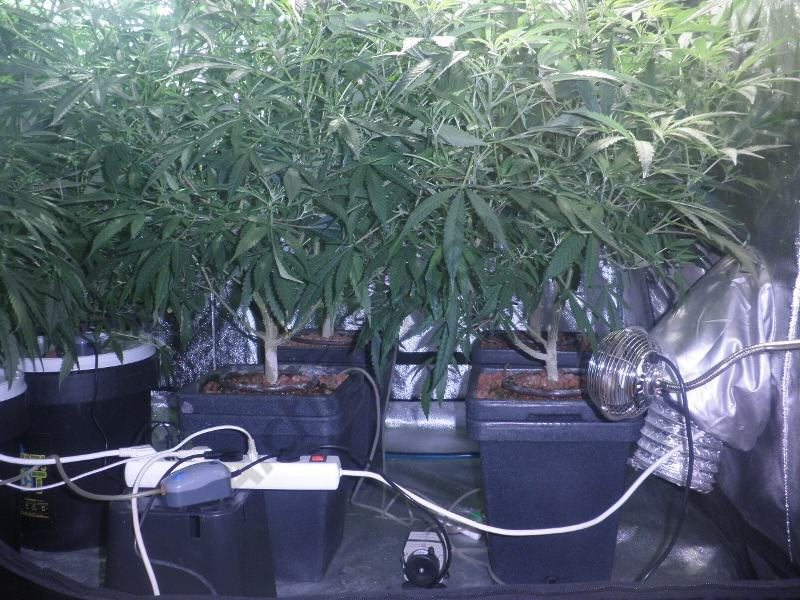
In the case of over-fertilising, when the plants have rid themselves of the nutrient excess or when we observe a clear improvement in their condition, we may proceed to irrigate again with the nutrient solution in the main tank. Previously, we must adapt the EC level of the tank to the suit the phase of the plant's life cycle. We should proceed by diluting the content of the tank with water that has an EC as low as possible with the purpose of lowering the final EC of the nutrient solution by a few points.
One point to consider when growing is that there can be great differences in nutrient requirements between different varieties of cannabis. For this reason, when cultivating hydroponically, it’s advisable to grow varieties with similar nutritional needs. However, it is possible to make a division of the tank and the irrigation system in order to use two deposit tanks with different nutrient solutions according to needs of the two varieties.
How to use Hydrogen Peroxide with clay pebbles

Hydrogen Peroxide or H2o2 is widely recognised as a great disinfectant. This product can be used as a preventative to disinfect the growing medium where our plants will grow. The expanded clay pellets may be contaminated and often contain elements that aren't compatible with growing of cannabis. For this reason it is always appropriate to use H2o2 to disinfect the substrate. To disinfect fully at the beginning of the grow, we recommend running the system with H2O2 during at least 24 hours before we introduce the plants to the growing medium. This will leave the expanded clay substrate free from any impurities that could negatively affect our plants.
We can also use H2O2 to clean the roots of the crop after we change the photoperiod from growth to flowering. This will leave the roots free of salts and in great condition to start the flowering period with health and vigour. In the case of using fertilizers type A+B, this kind of root washing is not necessary. The dosage of hydrogen peroxide to use is 1:2000 or equal to 50ml per 100 litres of water.
The Ph level in hydroponic crops

The PH level is an important factor when cultivating cannabis plants in any hydroponic system. This is due to the use of inert substrates, which are free from nutrient content and don't have the same buffer effect that soil has. This means that the plant is only able to feed on the aqueous solution. A well regulated pH level acts somewhat like a stopcock, in that it regulates the feeding flow and controls the plant's assimilation of nutrients.
For the growth period, the pH range can vary depending on the size and phase of the plant. For seedlings, plants and cuttings we can use a pH level of 5.5 to 5.8, while during the flowering period we employ a pH range that fluctuates from 6.0 to 6.2.
The pH fluctuations can be controlled within a logical range suitable for the uptake of nutrients. We can allow the initial pH of 6.0 to fluctuate up to 6.2 and later down to 6.0 again. In this way we will ensure that the plant is able to uptake all macro and micro nutrients within the nutrient solution and thus ensure an optimal development.
Happy growing!































































